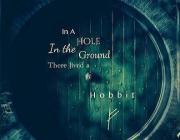Aderka IM, McLean CP, Huppert JD, Davidson JRT, Foa EB.
Fear, avoidance and physiological symptoms during cognitive-behavioral therapy for social anxiety disorder. Behaviour Research and Therapy [Internet]. 2013;51 :352 - 358.
Publisher's VersionAbstractWe examined fear, avoidance and physiological symptoms during cognitive-behavioral therapy (CBT) for social anxiety disorder (SAD). Participants were 177 individuals with generalized SAD who underwent a 14-week group CBT as part of a randomized controlled treatment trial. Participants filled out self-report measures of SAD symptoms at pre-treatment, week 4 of treatment, week 8 of treatment, and week 14 of treatment (post-treatment). Cross-lagged Structural Equation Modeling indicated that during the first 8 weeks of treatment avoidance predicted subsequent fear above and beyond previous fear, but fear did not predict subsequent avoidance beyond previous avoidance. However, during the last 6 weeks of treatment both fear and avoidance predicted changes in each other. In addition, changes in physiological symptoms occurred independently of changes in fear and avoidance. Our findings suggest that changes in avoidance spark the cycle of change in treatment of SAD, but the cycle may continu
Huppert JD, Kivity Y, Barlow DH, Gorman JM, Shear MK, Woods SW.
Therapist effects and the outcome—alliance correlation in cognitive behavioral therapy for panic disorder with agoraphobia. [Internet]. 2013.
Publisher's VersionAbstractAlthough the alliance–outcome correlation is well established, no published studies to date have separated between therapists’ and patients’ contributions while controlling for early symptom change. In this study, we examined therapist effects in two trials of CBT for panic disorder with agoraphobia (PDA) and the impact of therapists’ and patients’ contribution to the alliance on outcome and attrition in one trial. Alliance ratings were obtained from patients and therapists early and late in treatment (n = 133). Data were analyzed using multi-level modeling controlling for early symptom change. No therapist effects were found. The patients’ contribution to the alliance predicted [...]
Aderka IM, McLean CP, Huppert JD, Davidson JRT, Foa EB.
Fear, Avoidance and Physiological Symptoms during Cognitive-Behavioral Therapy for Social Anxiety Disorder. [Internet]. 2013.
Publisher's VersionAbstractWe examined fear, avoidance and physiological symptoms during cognitive-behavioral therapy (CBT) for social anxiety disorder (SAD). Participants were 177 individuals with generalized SAD who underwent a 14-week group CBT as part of a randomized controlled treatment trial. Participants filled out self-report measures of SAD symptoms at pre-treatment, week 4 of treatment, week 8 of treatment, and week 14 of treatment (post-treatment). Cross-lagged Structural Equation Modeling indicated that during the first 8 weeks of treatment avoidance predicted subsequent fear above and beyond previous fear, but fear did not predict subsequent avoidance beyond previous avoidance. However, during the last 6 weeks of [...]

